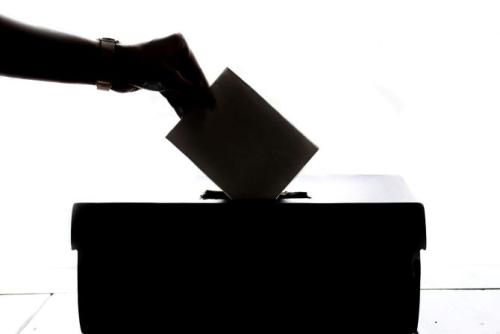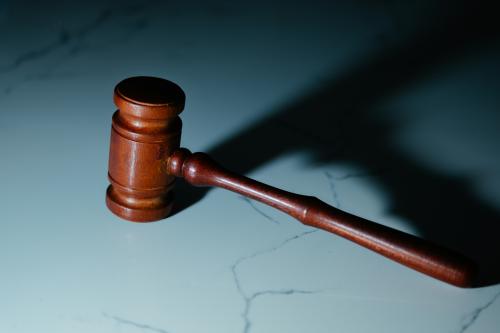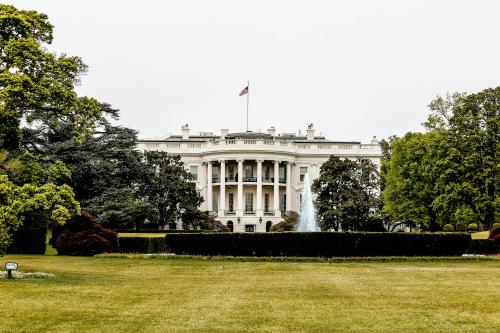One decision could challenge Congress' right to decide injury to consumers without proof, while potential amendment to statute of limitations could affect employment cases
The degree of protection companies have from consumer class actions and employee lawsuits could radically change as the result of three cases the US Supreme Court will decide this term. The court will also address when the statute of limitations starts to run on a constructive discharge claim. As the statute of limitations is short, the issue of how timely a claim is often arises, so the court’s decision could have a determinative impact in several employment cases. The three class action cases are Campbell-Ewald Company vs Gomez, argued October 14; Spokeo, Inc vs Robins, argued November 2; and Tyson Foods, Inc vs Bouaphakeo, argued November 10. The constructive discharge case is Green vs Brennan, argued November 30.
The issue in Campbell-Ewald is simple, but also profound: can a company prevent a class action from being certified by offering a settlement that would make the proposed lead plaintiff whole? If the answer is yes, companies would have a powerful way to stymie class actions.
Gomez sued Campbell-Ewald, a marketing communications firm, for sending him and thousands of others an unsolicited text message in violation of the Telephone Consumer Protection Act (TCPA), which prohibits various telemarketing activities. As with consumer protection statutes generally, the TCPA aims to deter certain corporate conduct by making it unlawful and providing fixed damages for violations, which makes it unnecessary for a consumer to prove the extent of damage he/she sustained. The TCPA authorizes a $500 penalty for each illegal text message. After Gomez sued as a putative class action, Campbell-Ewald promptly offered $1,500, or three times what Gomez himself could have received if he had brought an individual suit, in addition to costs he could have recovered and an injunction agreeing not to do it again. Gomez refused to settle because he was representing the putative class.
When duty calls
The named class participant has a duty to the class,’ explains Ira Rheingold, executive director and general counsel of the National Association of Consumer Advocates, which works to protect consumers from unfair and deceptive business practices. ‘The named plaintiff’s interests cannot supersede the interests of the class.’ The idea that the named plaintiff could take a settlement and, in effect, abandon the putative class turns the notion of what a class action is on its head, he adds. Campbell-Ewald exemplifies how high the stakes are for companies; given the thousands of people involved, were Campbell-Ewald forced to settle with the whole class, it could face millions of dollars in charges.
The issue is framed in constitutional terms because Article III requires federal courts to hear only cases and controversies. The argument is: if the plaintiff is made whole, all issues are moot and there ceases to be a case. Nine firms, business trade groups and pro-business legal advocacy organizations, including the US Chamber of Commerce and the Business Roundtable, support Campbell-Ewald in its argument that it should be able to, in effect, force Gomez to agree to a personally favorable settlement. His right to refuse a personal settlement in order to represent the interests of other consumers is supported by seven groups, including labor unions, the AARP and Washington, DC’s Legal Aid Society. At oral argument, Chief Justice John Roberts asked: ‘If you’re getting everything you want, what is the case or controversy? You won’t take yes for an answer!’
While this strategy for preventing class certification isn’t limited to a certain area of law, it is unlikely to be effective for all cases because of the need to show that the settlement offers complete relief. Columbia Law School Professor Ronald Mann, who has written about the case for SCOTUSblog, explains: ‘If this ‘involuntary mootness’ works at all, it certainly will be easier in cases in which the amount of damages is easily quantifiable, whether or not statutory.’
A good example of quantifiable damages that are non-statutory is Genesis vs Symczyk, a Federal Labor Relations Authority case disputing the timing of breaks, where the court ruled ‘the employer could offer full pay for every minute of break time the employee took during the entire term of employment’ in order to nullify the class action.
Rheingold stresses that Campbell-Ewald is just one of many efforts to limit class actions in recent years. ‘It’s clear that it’s at least the chief justice’s agenda – and possibly a majority’s agenda – to make it harder for consumers and workers to achieve some semblance of justice against corporations and hold them accountable for their wrongdoing,’ he says.
No harm, no foul
If Campbell-Ewald arose in the context of consumer protection class actions, Spokeo takes direct aim at them. Consumer protection law is based on the idea that ‘the only way corporations will fly right is if the cost of bad business practices is sufficient,’ says Rheingold. In addition to imposing fines for violations, consumer protection statutes often provide for attorneys fees, to make it easier for consumers to seek to have the law enforced.
Spokeo challenges this ban-and-fine approach by questioning whether Congress can decide injury to consumers exists without individual consumers having to prove injury. The respondent argued that Spokeo violated the Fair Credit Reporting Act, and should pay him a penalty for failing to ‘follow reasonable procedures to assure maximum possible accuracy’ of his consumer-report information before posting it on its website. Spokeo counters that the respondent has not suffered any adverse impact from the published information, such as being denied a loan. Because courts require that plaintiffs demonstrate they’ve been harmed to have standing, Spokeo says the respondent shouldn’t be allowed to sue. The question before the court is whether it’s enough for plaintiffs to point to a statute and assert the violation, or must they prove the violation injured them?
Foley & Lardner partner Joseph Jacquot, who wrote one of the amicus briefs on Spokeo’s side, argues that consumers cannot have standing without showing some actual injury. ‘If you have a situation where you can prove harm, which doesn’t take much, you’re going to proceed on that basis of standing,’ he says. ‘This issue only comes up in situations where you can’t show even a few pennies of harm.
The Supreme Court took the case, Jacquot says, because there is a circuit split, meaning in some parts of the country class actions can be brought without showing harm as long as the statute authorizes it, but not in other places. He calls Spokeo one of the most significant business cases this term because of ‘the potential exposure that would be opened up on companies nationwide if Robins prevails, particularly on class actions.'
At root, he says, the issue is a separation-of-powers question: can Congress legislate standing for people who can’t prove injury, as normally defined by the courts? ‘The concern to the business community will be that creative plaintiff attorneys will be able to file enormous suits, potentially trillion-dollar suits, [putting] tremendous pressure on the companies to settle,’ Jacquot explains. While any companies that deal with consumers are at risk of mega-suits, ‘the more documents and data a company deals with, the higher the risk.
Rheingold scoffs at the lack-of-standing argument, asserting Congress has the power to legislate the right to be in court. ‘The great lie is that there’s no harm,’ he says.'We’re talking about privacy. Instead of having a court determine what the value is to that person being interrupted at dinner by a stupid automatic dialer, Congress decides the harm exists and determines the damages.’
Jacquot says that even if the court rules for Spokeo, consumers will still have defenders such as state attorneys general and federal regulators. He also notes that some states have their own consumer protection laws that would be unaffected by the ruling. But Rheingold is frustrated by the very real possibility that Spokeo may prevail. To his mind, ruling for Spokeo would be a radical change from a decades-long approach by consumer protection laws: that they are driven by strategic corporate litigation. ‘I find all of these cases to be back-door, cynical attempts to stop consumer and worker protections,’ he says.
Overdue overtime
Tyson, the third major class action case, affects workers rather than consumers and centers on claims the company failed to pay appropriate overtime. The case is unusual for involving both a collective action under the Fair Labor Standards Act and a Rule 23 class action, because a state law wage-and-hour case was also brought. These types of cases often have different bodies of law associated with them, but the rule in this case is set up to apply to both.
The Tyson case asks whether damages can be determined for the class using a statistical analysis that will result in some people getting money who were not injured. The issue arises because of Justice Scalia writing in the opinion on the famous Walmart vs Dukes case that it would violate due process if class certification were to prevent a company from asserting defenses against some members of the class. In this case, Tyson says class certification would prevent it from defending itself by proving some workers in the class were properly paid and thus suffered no damage. Tyson argues that average worker times cannot be used to assess unpaid overtime; that would, in effect, be an impermissible ‘trial by formula’.
The challenge Tyson faces is that the issue of how perfect a class must be is arising in the wage-and-hour context, explains Seth Lesser, a consumer attorney who wrote one of the briefs on the workers’ side. In the 1946 case Mt Clemens Pottery vs Anderson, the Supreme Court determined that ‘representative testimony’ about workers’ hours could be used to determine lost wages. The testimony was allowed, Lesser says, because the court recognized the incentives created by prohibiting it. He noted that in the opinion the court wrote: ‘You can’t penalize the employee on the grounds he can’t prove the precise extent of his uncompensated work because that would place a premium on the employer’s failure to keep accurate records.’
Given that long-standing precedent, Lesser thinks it unlikely the court will prohibit using formulas to determine classes and damages, though he believes Tyson Foods could eke out a partial victory by having the court decide that while formulas are theoretically allowed, the one used in this case was not precise enough.
Gainfully employed
In Green – the one pending case of general corporate interest outside of the class action context – Green claims his workplace was so hostile that he was constructively discharged. The question is whether his suit is timely under the statute of limitations: if the clock starts when the allegedly constructively discharged employee quits, his claim is timely. If it starts when the last allegedly hostile act occurred, his claim is barred. The court took the case to resolve the split between a few circuits that count from the time of the last harmful act and the many more circuits that count from when the employee quit.
Greg Keating of Choate Hall & Stewart, agrees ‘with the 10th Circuit and the amicus that say the clock starts with the last bad thing, not the day you resign.’ He believes it is ‘fundamentally unfair’ to the employer to allow employees to control the statute of limitations by timing their decisions to quit, but concedes that ‘it’s somewhat infrequent’ for that last act to be distant from the decision to resign.
Because the timeliness issue arises frequently, Keating says he was not surprised that eight circuits had already decided the issue. It’s also why the case will be important, although he doesn’t consider it ‘a game-changing event that affects all the cases.’
This article appeared in the winter 2015-2016 print issue of Corporate Secretary Magazine








